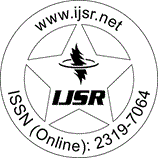Downloads: 0
India | Educational Psychology | Volume 14 Issue 10, October 2025 | Pages: 452 - 454
Development of Heat & Thermodynamics Achievement Test (HTAT) Based on Revised Bloom's Taxonomy of Educational Objectives
Abstract: This paper reports the systematic development and validation of the Heat & Thermodynamics Achievement Test (HTAT) for higher secondary (Class 11) physics students studying under Tamil Nadu state board syllabus. It was done as part of a study to investigate the effectiveness of jigsaw cooperative learning on the academic achievement of class 11 students in physics. The HTAT was designed to measure student learning across six cognitive domains of the Revised Bloom?s Taxonomy (Remembering, Understanding, Applying, Analyzing, Evaluating, and Creating) for the unit Heat & Thermodynamics. Instrument construction followed a four- stage process: blueprinting, item writing, expert validation, and empirical pilot testing (N = 60). Classical item analysis and internal consistency estimates (Cronbach?s alpha) were conducted and construct validity was explored using exploratory factor analysis. Results indicate that the HTAT contains 44 well-behaved items (balanced across cognitive levels and content sub- topics), with acceptable reliability (? = .80), appropriate item difficulty (.3 < p < .7) & discrimination value (D ? .4), and a coherent factor structure reflecting major content aspects. The HTAT is presented as a valid, reliable, and practical tool for classroom assessment and research on learning interventions in heat and thermodynamics unit of class 11 Physics.
Keywords: Revised Bloom's Taxonomy, cognitive levels, Physics, Heat and Thermodynamics, higher secondary, achievement test
How to Cite?: Dr. R. Senthil Kumar, "Development of Heat & Thermodynamics Achievement Test (HTAT) Based on Revised Bloom's Taxonomy of Educational Objectives", Volume 14 Issue 10, October 2025, International Journal of Science and Research (IJSR), Pages: 452-454, https://www.ijsr.net/getabstract.php?paperid=SR251009111650, DOI: https://dx.doi.org/10.21275/SR251009111650
